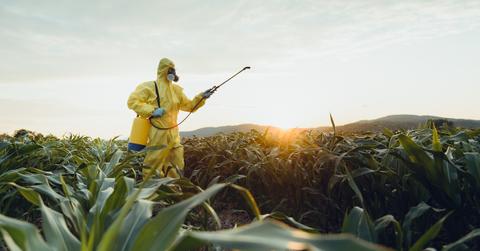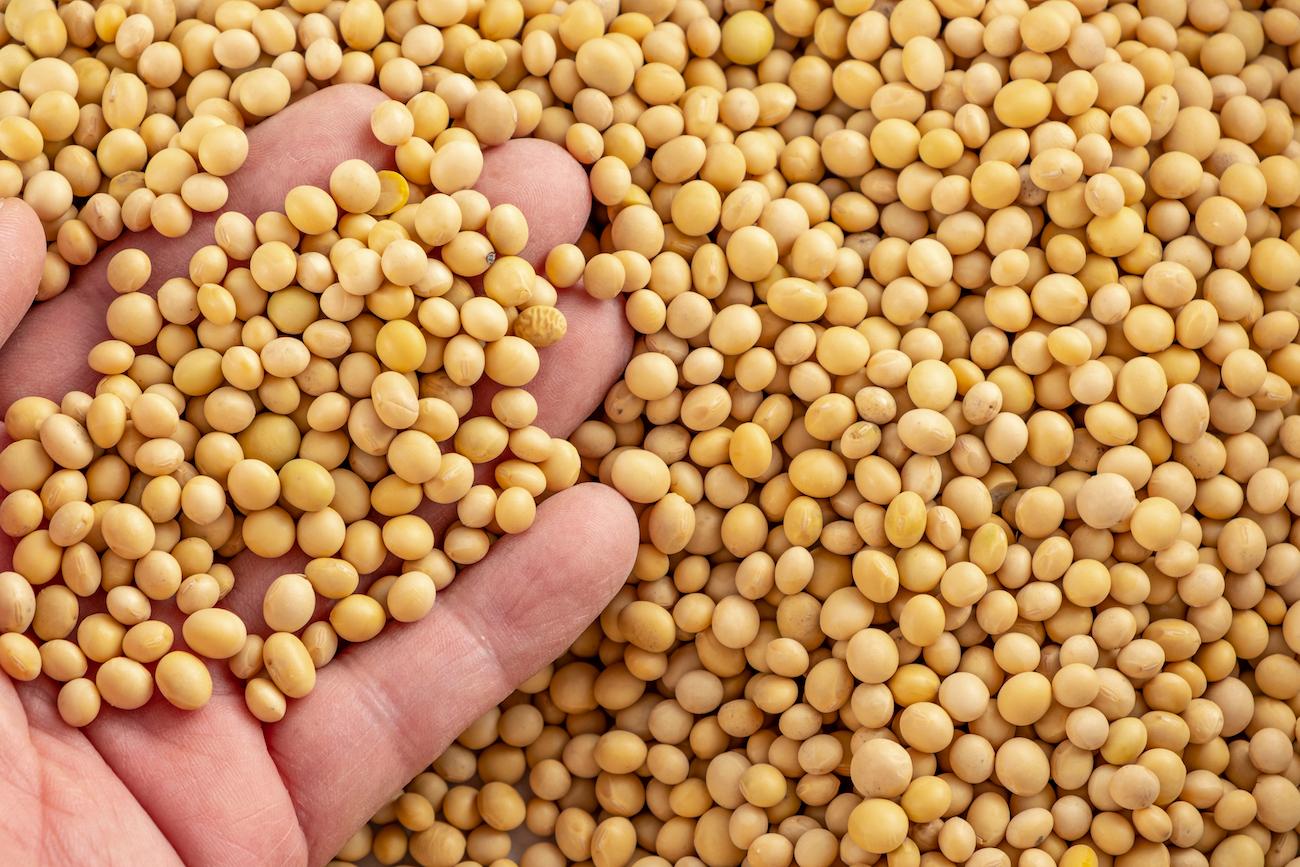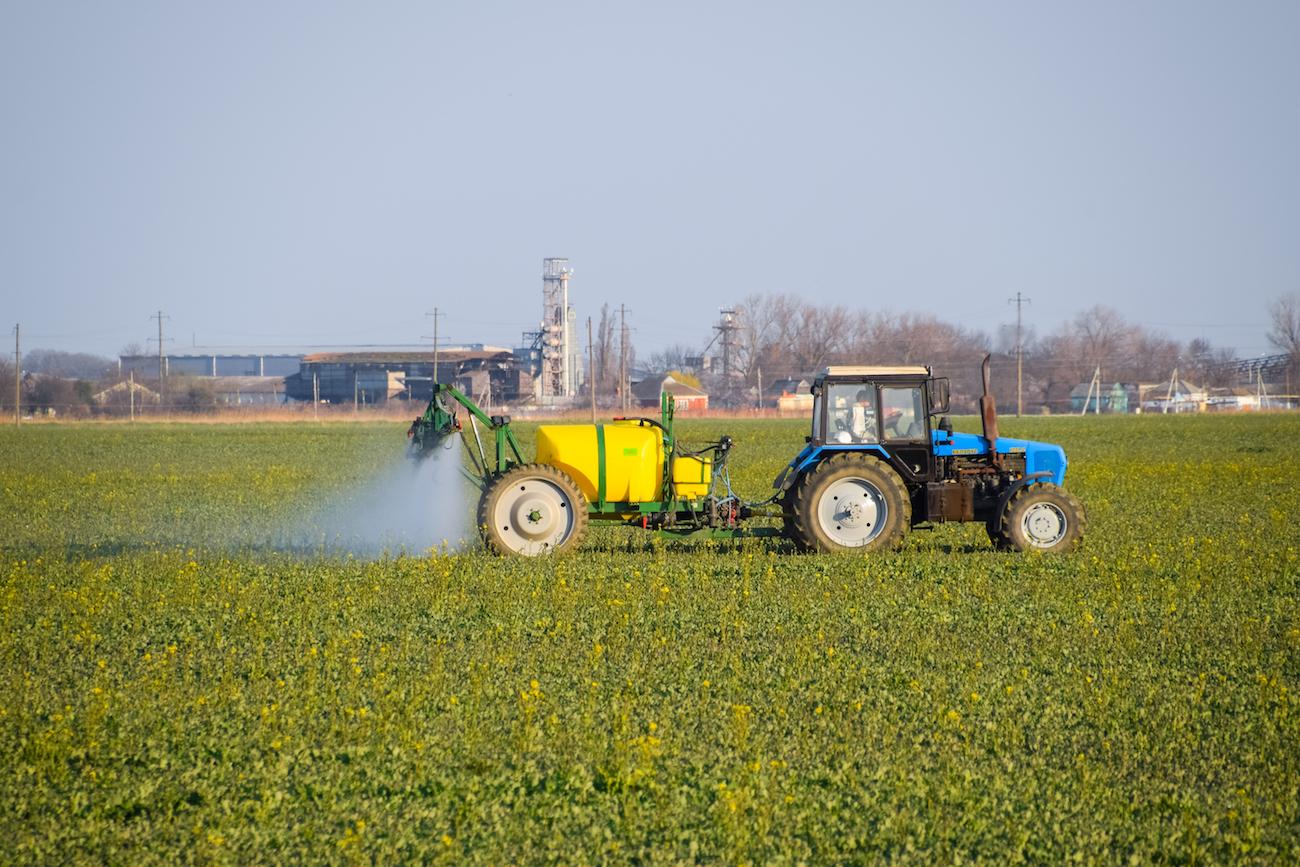Pros and Cons of GMOs: Is Eating GMOs Bad For You?
Here's everything you need to know about how GMOs affect the environment and our health.
Updated Sept. 13 2019, 2:30 p.m. ET

Genetically modified organisms, known as GMOs, have massively changed modern agriculture over the past few decades. And while those in the agriculture industry probably know all about the differences between GMO crops, non-GMO crops, and organic crops, the topic of GMO crops is quite controversial amongst consumers. If you’ve been wondering about the pros and cons of GMOs, read on for everything you need to know.
What Are GMOs, or Genetically Modified Organisms?
A GMO is an organism (typically a plant, but also an animal or microorganism) whose genes have been genetically engineered in a lab, ultimately yielding an organism with “desirable” traits that do not occur in nature, according to the Non-GMO Project. GMO crops were first invented in 1982, when scientists genetically engineered a tomato, according to the United States Department of Agriculture's (USDA) report Genetically Engineered Crops in the United States. A few years later, in 1985, the USDA approved additional field tests of GE organisms, and then in 1996, the USDA approved of commercially-produced GE crops.
As explained by the USDA, since 1996, most U.S. GMO crops in the U.S. have been genetically modified to have either herbicide tolerance and/or insect resistance, meaning they can be sprayed with pesticides or attacked by insects, and still thrive and grow.
Since then, GMO crops have grown exponentially. For example, more than 93 percent of corn and soy grown in the U.S. are GMO — and most of that corn and soy is fed to livestock in the factory farming industry (where 99 percent of our meat, dairy, and eggs come from).
Pros of GMOs

As mentioned above, genetically modifying a plant can make the crop resistant to things like pesticides and insects, as well as resist frost, diseases, animals. This has made it easier for farmers to grow crops on a larger scale without worrying about those elements ruining their crops. For example, the corporation Monsanto (now absorbed by Bayer) used the controversial herbicide glyphosate to make the pesticide Roundup, and subsequently develop “Roundup Ready” crops. Glyphosate works as a pesticide, while still allowing the Roundup Ready crop to flourish.
This has resulted in major pros for the corporations who grow these crops, and for the corporations who sell glyphosate (namely, Monsanto) — those pros being a profit. That’s why non-organic produce is often cheaper than organic produce — organic produce cannot be grown using genetic engineering or pesticides.
Not to mention, GMO crops have drastically helped scale up the animal agriculture industry. As mentioned above, more than 93 percent of corn and soy grown in the U.S. are GMO. Not to mention, globally, 70 percent of soy is used to feed livestock, according to One Green Planet. The fact that most animals being raised for meat, dairy, and eggs are fed GMO crops further increases the environmental impact of animal agriculture.
Corporations who profit off of factory farming may see these things as “pros” of GMO crops. However, these are certainly not pros for the animal victims involved, for the people who work with glyphosate at their jobs, or for human health — more on all that, below.
Cons of GMO for the Environment
The main way that genetically modified crops affect the environment is via the increased amount of pesticides — namely glyphosate — that are sprayed in the fields. According to an NCBI study, more than 1.6 billion kilograms of glyphosate have been applied in the U.S. between 1974 and 2016. Not to mention, glyphosate reportedly remains in soil for up to 6 months after it’s been sprayed (that time frame varies depending on the type of soil and other conditions), according to the National Pesticide Information Center (NPIC). Additionally, sometimes glyphosate kills plants that negatively impact the habitats of local wildlife, which can reduce biodiversity, the NPIC added.
Notably, Michigan State University researchers found that glyphosate has caused a decline in the population of monarch butterflies, according to Make Way for Monarchs. The outlet explains that in the study, researchers found that glyphosate kills off significant amounts of milkweed (a plant that butterflies in the studied regions rely on), which was likely a culprit in the monarch butterflies’ decline.
Cons of GMOs for Human Health

The World Health Organization actually classifies glyphosate as carcinogenic, meaning it can potentially cause cancer, according to CNN. Currently, more than 11,000 people who were exposed to large amounts of glyphosate and are now suffering from cancer or other serious conditions are in the process of suing Monsanto for not providing adequate carcinogenic warnings on Roundup packaging. The company has already been ordered to pay two plaintiffs in these cases, and in response, places like Miami, Germany, and Costco have made moves to ban glyphosate and/or Roundup.
Even though all of the above-mentioned cons are direct results of glyphosate, and not of the GMO crops themselves, it’s clear that pesticides like glyphosate and GMO crops work hand in hand. That said, how does eating GMO crops affect our health?
Is It Safe to Eat GMO Crops?
The central risk of eating GMO crops is the trace pesticides that some plants still include. And GMO crops are not only found in the produce section — foods like grains, bread, packaged snacks, and animal products could include GMO crops, or crops that have been sprayed with glyphosate. Luckily, these crops only contain trace amounts of the chemical.
According to The New York Times, 90 percent of scientists believe that GMOs are safe to eat — however, there isn’t quite enough science on the topic yet to get consumers on board, two-thirds of whom are reportedly skeptical about the safety of eating GMOs.
To reduce the amount of pesticides that you’re consuming in general, try following the EWG’s Dirty Dozen and Clean Fifteen — items on the Dirty Dozen typically have the highest concentration of pesticides in the U.S.
If you would like to avoid consuming GMOs when possible, you can try to purchase organic-certified or non-GMO-certified versions of food that includes crops that are often genetically modified. Some of the most common GMO foods are:
- Alfalfa
- Aspartame
- Canola
- Cotton
- Corn
- Cow's milk
- Papaya
- Soybean
- Sugar beet
- Soy
- Sugar
- Yellow squash
- Zucchini
That said, don’t let a fear of eating GMO crops prevent you from consuming healthy plant food. Always make sure to do your research, and continue eating a diet filled with fresh produce and grains.